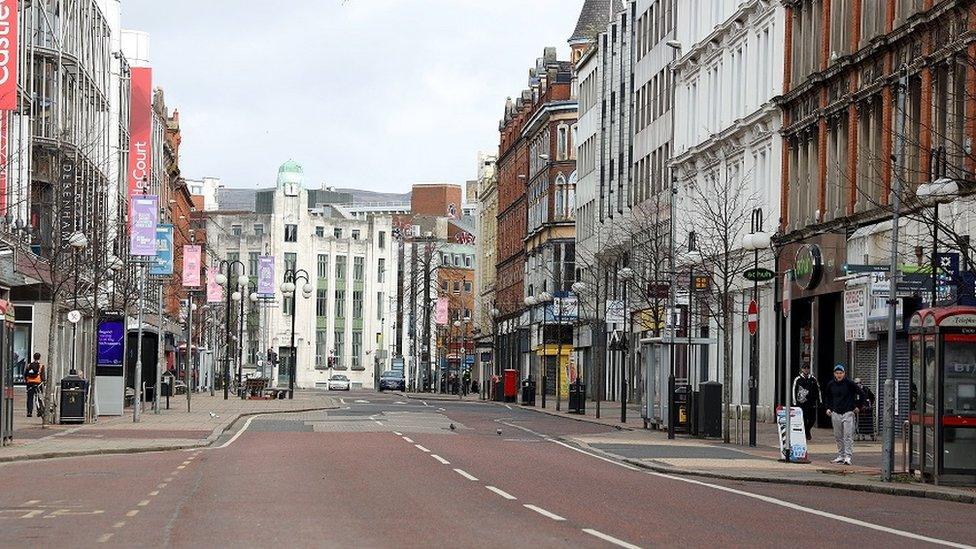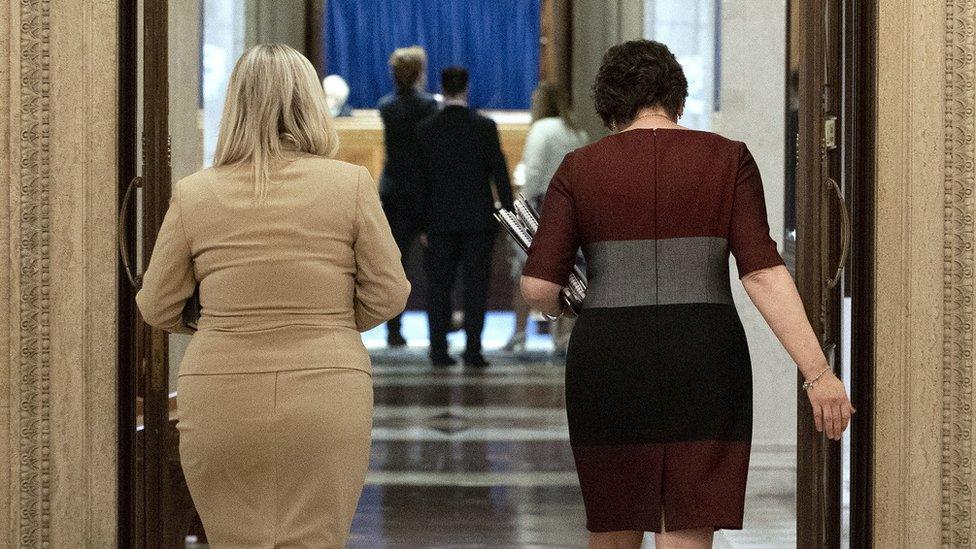Executive not 'tied down' by lockdown easing approach
- Published

Belfast's streets, deserted due to the lockdown
The Stormont Executive's five step document isn't so much a road map towards recovery - more an explanation of how ministers intend to make their decisions as they navigate their way forward.
The mantra is that the scientific criteria will be far more important than any arbitrary dates on a calendar.
However, this will no doubt cause frustration to businesses and other groups in the community who have called for a timetable on which to base their own plans.
The current coronavirus restrictions are due to be reviewed by the end of May .
But ministers aren't investing that date with any significance.
They say we could move to step one (the first easing of the current lockdown) before then, or perhaps not until sometime after then.
Moreover Stormont sources say that not all sectors will move at the same time - work for example could be at step three, whilst sport remains at step two.
The benefit of this approach is that the Executive will not tie itself down or have to engage in any difficult retreats in previously stated policies.
Stormont ministers point to other countries around the world which have appeared to make great progress in curbing the virus, but have more recently experienced flare ups and had to re-impose controls .

Michelle O'Neill and Arlene Foster briefed MLAs on the plan on Tuesday
However, maximum flexibility for Stormont equals maximum uncertainty for wider society.
Maybe that's just the reality in these challenging times.
In future weeks we shall all be trying to become increasingly well versed in the R number which measures the spread of the virus.
But ministers will know that their five-step approach will also be judged alongside the different five-point plans already laid out by Dublin and London which will influence the context in which people comply with the coronavirus regulations in the months ahead.
